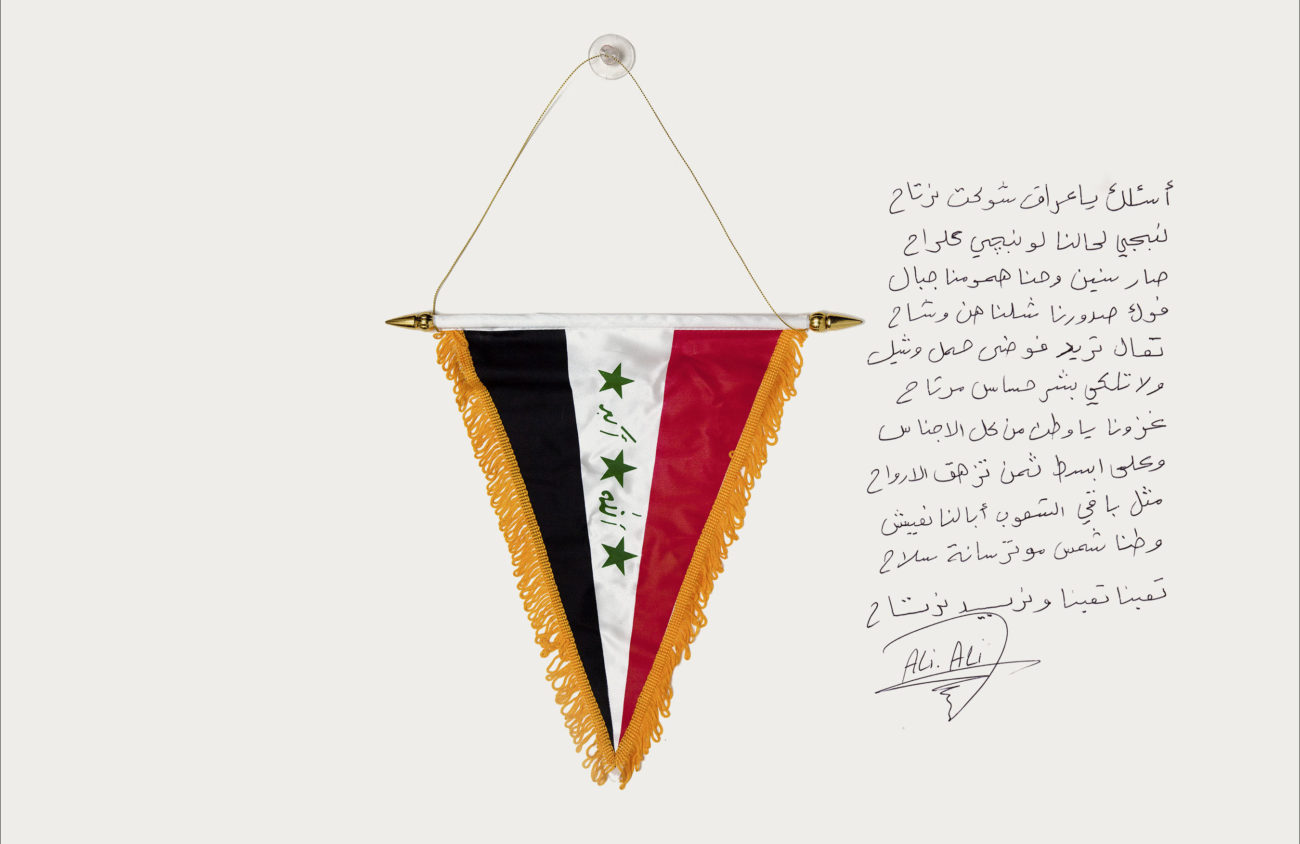Can photographic art capture and represent memories and voices? What We Carried: Fragments and Memories from the Cradle of Civilization, a photographic storytelling exhibition that is wrapping up Sept. 30 at The Klausmeier Room in Eugene’s New Zone Gallery, embodies such possibility.
Jim Lommasson, a 72-year-old photographer, author and Portland native, is showcasing 30 black-framed pieces that include photographed objects and written testimonies belonging to refugees, immigrants and Holocaust survivors, all from different nationalities across the globe. But at the beginning of his independent project, “I was not liking my photographs,” Lommasson says.
He started off taking pictures and conducting interviews. “But the pictures didn’t speak. They didn’t speak to anything that this is where they are now. And nothing about where they came from or their journey. Or what conditions were happening when they had to leave,” Lommasson says.
It all changed after he interviewed and photographed an Iraqi woman who fled Baghdad with her two small daughters, one under each arm along with diapers and milk, her Quran and a family portrait.
Turkey was their first stop; later, it was Russia and, eventually, they moved to a city in the U.S. before settling in Portland. The woman asked Lommasson to take a picture of her family portrait — to which he agreed. After printing her Quran and the family photo, he later ran across those two frames. “And I thought that’s what tells a story,” he says.
“Instead of me interviewing her, why don’t I ask her to write her own story, which is more authentic, is real, is in her own hand, is in her own language,” Lommasson says. “I just need to get out of the way and let them speak, and I can take pictures of the objects.”
He realized that he did not want this project to be about his photography, but to tell stories. That was the essence of it all: for What We Carried to be a platform where voices, memories and objects were captured and spoke for themselves.
“I have always done projects, and sometimes they are independent projects, but basically driven by curiosity. I am curious about something and so I immerse myself,” Lommasson says. His current exhibition reflects his work, engagement and curiosity. What We Carried is composed of four collaborations and has not ended; it is an ongoing project.
When you walk into The Klausmeier Room, discover the poem written by Lommasson at the left side of the entrance. Read it once and, if possible, twice. Two questions in it will leave you speechless or, perhaps, with a knot in your throat: “What few things would you take? What would you leave behind?”
A person chooses, carries and keeps an object that has meaning and history — in other words, memories. For the individuals interviewed and photographed by Lommasson, it was a quilt, an anthropology book, a family portrait, a flag, a drawing, a Barbie doll collection, a Kiki & Coco notebook and a photo as well as a Middle Eastern dishdasha, a plate, a set of coffee cups, a holy pouch and carpet made of neckties. Also, there’s a teddy bear, a concentration camp jacket, a 1944 letter, a suitcase, a journal, some cigarette wrappers, a couple of handmade playing cards, a shirt, a Kikwembe wrap, a once buried dress, a prayer book, a viola and some marbles.
What would you take if forced to flee due to political, economic, religious or war circumstances? What would you take if your life was in danger and your whole life depended on the small items you could carry?
This exhibition demonstrates that objects hold memories and people hold on to them. But how does a person choose between an object and an element for survival? What We Carried is a living testimony that particular things are priceless and that art can also be a platform to allow people’s voices to be heard.
What We Carried runs through Sept. 30 at the New Zone Gallery, 110 E. 11th Avenue. For more information: LommassonPictures.com.
